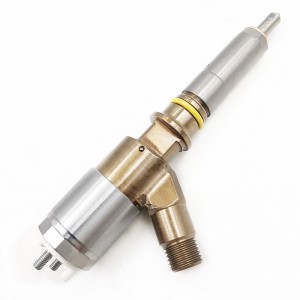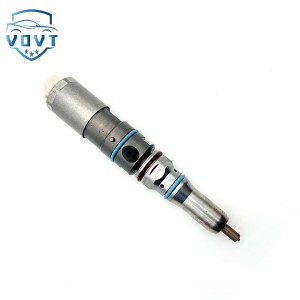New High Quality Diesel Injector 328-2576 320-2580 287-9431 387-9432 387-9433 For CAT C9
Products Description
| Reference. Codes | C9 |
| Application | C9 |
| MOQ | 4PCS |
| Certification | ISO9001 |
| Place of Origin | China |
| Packaging | Neutral packing |
| Quality Control | 100% tested before shipment |
| Lead time | 7~10 working days |
| Payment | T/T, L/C, Paypal, Western Union, MoneyGram or as your requirement |
How to achieve fast response matching between injector and engine control unit?
Hardware
Choose the right injector: According to the working characteristics and performance requirements of the engine, select an injector with fast response speed and good flow characteristics. For example, for high-performance engines, piezoelectric injectors can be used. Compared with traditional electromagnetic injectors, piezoelectric injectors have faster response speeds and can more accurately control the amount and time of fuel injection.
Optimize the injector drive circuit: Design a special drive circuit to increase the rise and fall speed of the injector drive current to achieve rapid opening and closing of the injector. For example, use high-power, high-speed driver chips, and reasonably design circuit parameters to reduce inductance and capacitance in the circuit and reduce signal transmission delay.
Increase ECU computing speed: Select a high-performance microprocessor as the core of the ECU, increase the memory capacity and computing speed of the ECU, so that it can quickly process signals input by various sensors, and generate accurate control instructions in time to drive the injector. At the same time, optimize the internal bus structure of the ECU to improve data transmission efficiency and reduce data processing time.
Software algorithm
Establish an accurate engine model: Through a large number of experiments and data analysis, establish an accurate mathematical model of the engine under different working conditions, including fuel injection model, combustion model, intake model, etc. These models can accurately reflect the dynamic characteristics of the engine, provide accurate control basis for the ECU, and enable the ECU to quickly calculate the appropriate injection parameters according to the actual working conditions of the engine.
Adopt advanced control algorithms: Use advanced control algorithms such as model predictive control (MPC), fuzzy control, and neural network control. Taking model predictive control as an example, it can calculate the optimal injection control strategy in advance based on the current state of the engine and the predicted state in the future, so as to achieve rapid response and precise control.
Optimize injection control strategy: Optimize the injection control strategy, such as using a multi-stage injection strategy. Under different engine working conditions, the fuel is injected in multiple times as needed to improve the atomization effect and combustion efficiency of the fuel. At the same time, according to the engine speed, load and other parameters, adjust the injection timing and injection amount in real time to match the injector response with the engine working condition changes.
System debugging and calibration
Dynamic testing and optimization: In the engine bench test and actual vehicle driving test, the collaborative work of the injector and ECU is dynamically tested. By monitoring various engine performance indicators, such as power, torque, fuel consumption rate, emissions, etc., as well as the actual injection conditions of the injector, such as injection volume, injection timing, etc., the matching of the injector and ECU is optimized and adjusted.
Sensor calibration and matching: Ensure that various sensors on the engine, such as air flow meter, water temperature sensor, crankshaft position sensor, etc., can accurately measure the engine's operating parameters and match well with the ECU. The measurement accuracy and response speed of the sensor directly affect the control accuracy and response speed of the ECU to the injector, so the sensor needs to be calibrated and maintained regularly to ensure its normal operation.
Data feedback and learning: Establish a data feedback mechanism so that the ECU can continuously learn and adjust the control parameters according to the actual engine operation data and injection effect to adapt to different engine conditions and environmental conditions. For example, by analyzing the oxygen content information in the exhaust gas fed back by the oxygen sensor, the ECU can adjust the injection amount in real time to keep the air-fuel ratio within the optimal range, thereby improving engine performance and fuel economy.

























